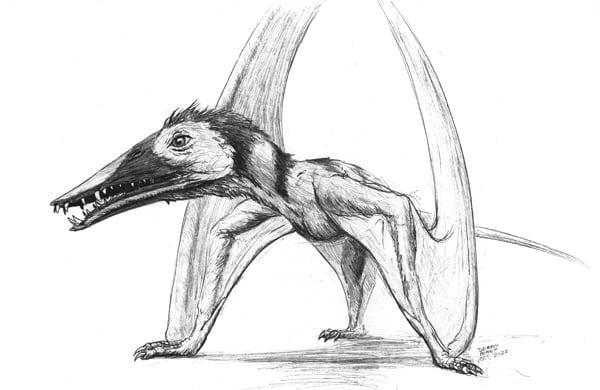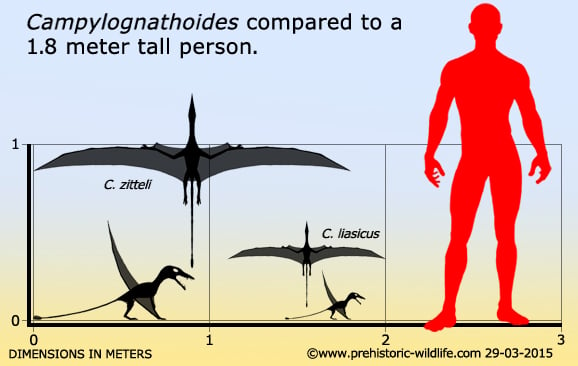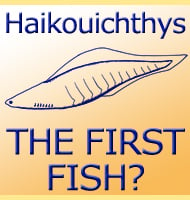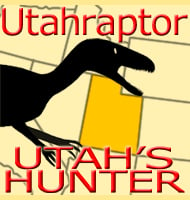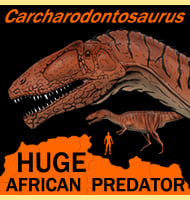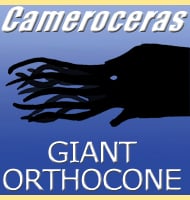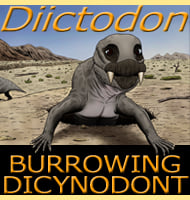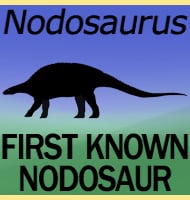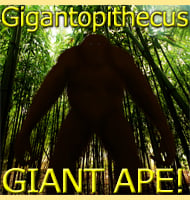In Depth
Campylognathoides was much like the other basal pterosaurs that flew in the skies of Jurassic Europe. It is also probably that Campylognathoides shared the skies with the well-known pterosaur Dorygnathus as evidenced by the presence of both pterosaurs in the same fossil beds. However, although usually depicted as a fish hunting piscivore, Campylognathoides may have had different prey in mind to avoid direct competition with Dorygnathus. Good justification for this view can be seen in the shorter jaws of Campylognathoides which are less suited to plucking fish out of the water while on the wing. An alternative is that while Campylognathoides did live in coastal areas as evidenced by the fossil sites, it may not have been restricted to them. Also while living at the coast, it may have hunted for land animals, or even lived the life of a beach comber, feeding upon whatever the previous tide had washed in.
Like in other rhamphorhynchoid pterosaurs, the caudal vertebra of the tail were lashed firm by tendons, and presumably used as a steering aid in flight, something that is thought to be quite possible because the base of the tail is still flexible. While the actual arms are short, Campylognathoides still achieved a long wing by having an exceptionally long fourth digit, the finger that actually made the outer trailing edge in pterosaur wings.
One of the Campylognathoides species, C. indicus may yet prove to be non-existent. This is because C. indicus was based only on a partial jaw that may yet prove to not belong to a pterosaur at all. Also the Kota Formation that it was recovered has since been found to represent a different period in Earth history. Also C. liasicus has also been considered to be the same as C. zittelli on the principal that it may represent a younger specimen. Unfortunately the type specimen of C. liasicus is poorly preserved and the juvenile stages of C. zitteli are not well known like they are in other pterosaurs such as Rhamphorhynchus. Without more juvenile becoming known, it is almost impossible to say that C. liasicus is the juvenile form of C.zitteli, and for the time being at least, it is still treated as a separate species.
Further Reading
– Campylognathus Zitteli, ein neuer Flugsaurier aus dem obersten Lias Schwabens. – Pal�ontographica 41. – F. Plieninger – 1894. – Campylognathoides liasicus (Quenstedt), an Upper Liassic pterosaur from Holzmaden — The Pittsburgh specimen. – Annals of Carnegie Museum, 45: 5-34. – P. Wellnhofer – 1974.
